Hoops Rumors is checking in on the 2024 offseason for all 30 NBA teams, recapping the summer’s free agent signings, trades, draft picks, departures, and more. We’ll take a look at each team’s offseason moves and consider what might still be coming before the regular season begins. Today, we’re focusing on the Utah Jazz.
This is the final installment of our Offseason Check-In series. All 30 articles can be found here.
Free agent signings
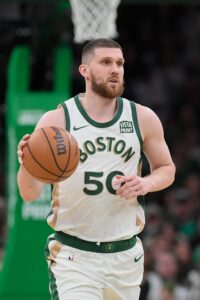 Svi Mykhailiuk: Four years, $15,050,000. Second and third years non-guaranteed. Fourth-year team option. Signed using cap room.
Svi Mykhailiuk: Four years, $15,050,000. Second and third years non-guaranteed. Fourth-year team option. Signed using cap room.- Johnny Juzang: Four years, $11,425,252. Second, third, and fourth years non-guaranteed. Re-signed using Early Bird rights.
- Drew Eubanks: Two years, $9,750,000. Second year non-guaranteed. Signed using cap room.
- Patty Mills: One year, minimum salary. Signed using minimum salary exception.
- Max Abmas: One year, minimum salary. Non-guaranteed (Exhibit 10). Signed using minimum salary exception.
- Taevion Kinsey: One year, minimum salary. Non-guaranteed (Exhibit 10). Signed using minimum salary exception.
- Isaiah Wong: One year, minimum salary. Non-guaranteed (Exhibit 10). Signed using minimum salary exception.
- Keshawn Justice: One year, minimum salary. Non-guaranteed (Exhibit 10). Signed using minimum salary exception.
- Note: Justice was subsequently waived.
- Dane Goodwin: One year, minimum salary. Non-guaranteed (Exhibit 10). Signed using minimum salary exception.
- Note: Goodwin was subsequently waived.
- Babacar Sane: One year, minimum salary. Non-guaranteed (Exhibit 10). Signed using minimum salary exception.
- Note: Sane was subsequently waived.
Trades
- Acquired Russell Westbrook, the right to swap their own 2030 second-round pick for the Clippers’ 2030 second-round pick, the draft rights to Balsa Koprivica, and cash ($4.3MM) from the Clippers in exchange for Kris Dunn (sign-and-trade).
- Note: Westbrook was subsequently bought out.
Draft picks
- 1-10: Cody Williams
- Signed to rookie scale contract (four years, $24,897,090).
- 1-29: Isaiah Collier
- Signed to rookie scale contract (four years, $12,903,788).
- 2-32: Kyle Filipowski
- Signed to four-year, $12,000,000 contract. First two years guaranteed. Third year non-guaranteed. Fourth-year team option.
Two-way signings
- Taevion Kinsey
- Note: Kinsey was subsequently waived and re-signed to an Exhibit 10 contract.
- Micah Potter
- Oscar Tshiebwe
Departed/unsigned free agents
- Kris Dunn (Clippers)
- Talen Horton-Tucker (Bulls)
- Kira Lewis (Wizards)
- Luka Samanic (Fenerbahce)
Other moves
- Renegotiated and extended Lauri Markkanen‘s one-year, $18,044,544 contract. Increased 2024/25 salary by $24,131,856 to $42,176,400. Added four years, $195,868,144.
- Bought out Russell Westbrook.
- Waived Darius Bazley.
- Waived Kenneth Lofton.
- Waived Omer Yurtseven
Salary cap situation
- Went below the cap to use room.
- Now operating over the cap ($140.6MM) and below the luxury tax line ($170.8MM).
- Carrying approximately $144.8MM in salary.
- No hard cap.
- Full room exception ($8MM) available.
The offseason so far
Two days after the Jazz’s season ended in April, CEO Danny Ainge vowed that the team was prepared to go “big-game hunting” this offseason after finishing below .500 in back-to-back years.
It was an assertion that was met with some skepticism. After all, despite Utah’s consecutive seasons in the lottery, the team hadn’t drafted higher than ninth overall since its rebuild began, and while the front office was able to add some promising young prospects in the 2023 and 2024 drafts, none of them looks like the sort of franchise centerpiece the Jazz can build around for years to come.
It wasn’t a huge surprise then when reports indicated in July that the Jazz’s offseason efforts to acquire an impact player – such as Mikal Bridges – on the trade market had come up short. Giving up five first-round picks for Bridges was a logical next step for the Knicks, who were within a single win of an Eastern Conference Finals appearance in the spring and presumably considered themselves just a piece or two away from becoming true championship contenders.
Surrendering that sort of package for a player without an All-Star berth on his résumé would have made less sense for the Jazz, who would have been a playoff contender with Bridges on their roster but still wouldn’t have had enough talent to hang with the Western Conference’s very best teams.
It’s also hard to imagine Ainge – whose trades selling off the likes of Kevin Garnett, Paul Pierce, and Rudy Gobert are among the defining moves of his executive career – finding himself on the other end of that sort of deal, which would’ve put a major dent in the Jazz’s stash of future draft assets without making them an elite team.
The biggest decision of Utah’s offseason ultimately wasn’t whether or not to meet the substantial asking price for a trade target like Bridges — it was whether or not to turn star forward Lauri Markkanen into one of those trade chips himself.
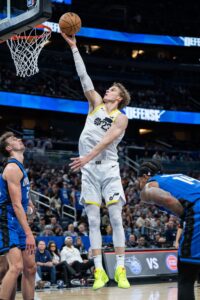 Markkanen’s situation this summer was an unusual and complex one. He was in the final year of a contract that was so far below his market value that any over-the-cap team acquiring him would’ve been unable to extend him prior to free agency, since they wouldn’t have been able to offer him more than a 40% raise on his expiring $18MM salary.
Markkanen’s situation this summer was an unusual and complex one. He was in the final year of a contract that was so far below his market value that any over-the-cap team acquiring him would’ve been unable to extend him prior to free agency, since they wouldn’t have been able to offer him more than a 40% raise on his expiring $18MM salary.
The only way to circumvent that restriction was to renegotiate (ie. increase) Markkanen’s 2024/25 salary, then to extend him off that new number. But cap room is required for a renegotiation, and the Jazz were one of the only teams with significant cap room available this summer. Renegotiating and extending Markkanen would have made him a more attractive trade chip for Utah, but it also would have made him ineligible to be dealt for six months.
Markkanen became renegotiation-eligible on August 6. He and the Jazz finalized a renegotiation and extension on August 7, ensuring that he won’t become eligible to be traded until February 7, one day after this season’s deadline.
Utah’s willingness to wait that extra day and still give Markkanen as much money as they possibly could on a long-term, maximum-salary contract signaled the team was comfortable with the idea of keeping the 2023 All-Star on its roster for at least the 2024/25 season. And the comments made publicly by both sides – at the time of the deal and since then – suggest they’re committed to continuing their relationship well beyond that, so we shouldn’t necessarily expect Markkanen to hit the trade block during the 2025 offseason.
The Jazz’s decision not to trade Markkanen is an understandable one. They’ve already been rebuilding for two years — moving Markkanen would’ve extended the process by at least a couple more seasons. And without the inability to extend him before trading him, they would’ve had to move him on an expiring contract, limiting their ability to maximize the return.
Still, a Markkanen trade would’ve clearly defined the Jazz’s direction, essentially guaranteeing that they’d retain the top-10 protected 2025 first-round pick they owe the Thunder and making them one of the leaders in the Cooper Flagg sweepstakes. With Markkanen on the roster, it’s possible the club will end up in the range of 30-40 wins for a third straight season, not quite good enough to earn a play-in spot and not quite bad enough to have a great shot at a franchise-changing player in the draft lottery.
The Markkanen extension was the most impactful move of a Jazz offseason that didn’t see them commit more than one guaranteed season to any other veteran signee. Svi Mykhailiuk, Johnny Juzang, Drew Eubanks, and Patty Mills all inked free agent contracts with the club, but none of them will earn more than $5MM in 2024/25 and all four could be off Utah’s books by ’25/26 if they don’t impress this season.
The most noteworthy offseason roster additions came in the draft, which saw the Jazz select three players in the top 32: Cody Williams at No. 10, Isaiah Collier at No. 29, and Kyle Filipowski at No. 32.
Williams holds real intrigue as a three-and-D wing if he can increase his shot volume without his percentage dropping off, while the Collier and Filipowski picks saw Utah roll the dice on a pair of prospects who dropped further than initially projected. At one point, both Collier and Filipowski were considered potential lottery selections.
Given that the Jazz’s front office will likely want to hang onto their top-10 protected first-round pick for 2025, I expect we’ll see this year’s crop of rookies and the 2023 first-rounders – Taylor Hendricks, Keyonte George, and Brice Sensabaugh – get plenty of run this season.
Up next
The Jazz are carrying 15 players on guaranteed contracts and none of them seem likely to be waived before the season begins, so the opening night roster decisions look pretty straightforward.
It’s always possible Utah will swap out one of its two-way players for someone new, but those three roster spots are occupied for now too.
Meanwhile, just two Jazz players are extension-eligible before the regular season begins: John Collins and Collin Sexton. I wouldn’t count on either veteran getting a new deal with two years left on his current contract, but Sexton is the better candidate of the two — I could envision a scenario in which he remains in Utah beyond his existing deal, whereas that’s harder to imagine for Collins.
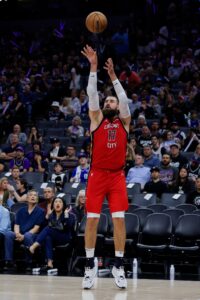
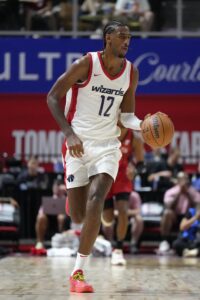 Using the No. 14 pick from that deal, the Wizards selected Pittsburgh guard
Using the No. 14 pick from that deal, the Wizards selected Pittsburgh guard 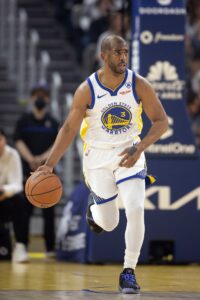
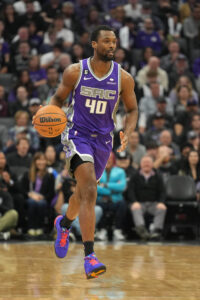 Adding two rookies to a young roster also might not have the been the best approach for optimizing Wembanyama’s development, which was certainly a consideration for the Spurs this offseason. That’s a key reason why the team used essentially all of its available cap room to bring in a pair of veterans:
Adding two rookies to a young roster also might not have the been the best approach for optimizing Wembanyama’s development, which was certainly a consideration for the Spurs this offseason. That’s a key reason why the team used essentially all of its available cap room to bring in a pair of veterans: 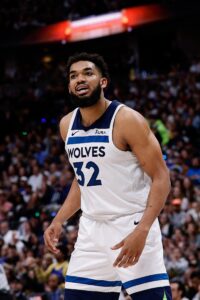 According to reports,
According to reports, 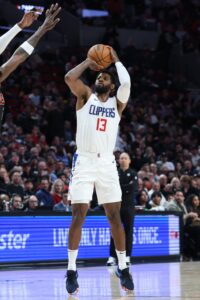
 But few players in the NBA would have been better fits alongside Maxey and Embiid than George, who is essentially the ideal version of the three-and-D archetype that has become so popular in the league in the last decade. He can handle the toughest wing assignments on defense while also sharing ball-handling and scoring responsibilities on offense with the 76ers’ two other stars.
But few players in the NBA would have been better fits alongside Maxey and Embiid than George, who is essentially the ideal version of the three-and-D archetype that has become so popular in the league in the last decade. He can handle the toughest wing assignments on defense while also sharing ball-handling and scoring responsibilities on offense with the 76ers’ two other stars.